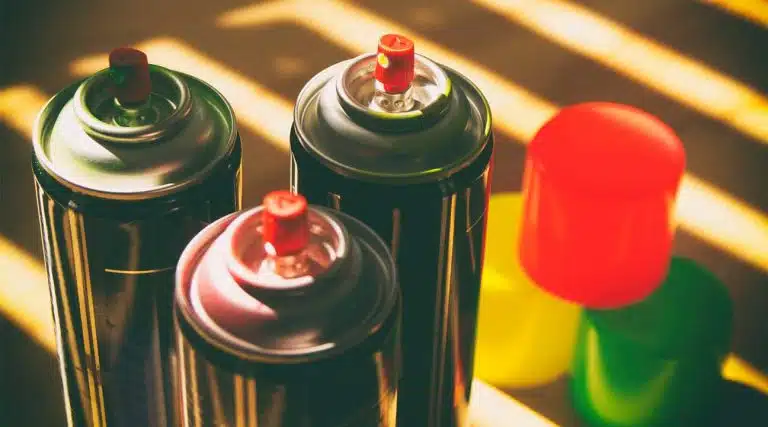Inhalant Abuse & Addiction | Types, Effects, & Treatment Options
- What Are Inhalants?
- Types Of Inhalants
- Effects Of Inhalant Abuse
- Dangers of Inhalants
- Addiction & Withdrawal
- Treatment Options

Each year, over 750,000 United States citizens age 12 and older try inhalants. Cheap and accessible, inhalants pose a serious risk of abuse.
Inhalant abuse can lead to severe health problems and even addiction. Fortunately, inpatient treatment programs can help you or your family achieve long-term recovery.
What Are Inhalants?
Inhalants are common medical, industrial, and household products that produce toxic vapors.
When breathed in through the nose or mouth, these vapors have psychoactive (mind-altering) effects that are similar to the effects of alcohol. That’s why some people, especially teens and preteens, use inhalants to get high.
The vapors can be inhaled in a variety of ways:
- sniffing or snorting them straight from the product’s container (which is known as “sniffing” or “snorting”)
- inhaling them from a paper or plastic bag after depositing the product inside the bag (“bagging”)
- soaking a cloth in the product and then placing the cloth in the mouth (“huffing”)
- Spraying aerosols into the mouth or nose (“spraying”)
With each of these methods, the lungs quickly absorb the vapors and send them through the bloodstream to the brain and other organs. This produces a feeling of euphoria or intense joy.
The feeling of euphoria doesn’t last long, though; to prolong it, a person may inhale the substance over and over for hours.
Types Of Inhalants
The National Institute on Drug Abuse groups inhalants into four categories: volatile solvents, aerosols, gases, and nitrites.
Volatile Solvents
These liquid substances, which vaporize at room temperature, include:
- gasoline
- glue
- rubber cement
- nail polish
- nail polish remover
- paint thinners
- paint removers
- correction fluids
- dry-cleaning fluids
- lighter fluid
- felt-tip marker fluid
- electronic contact cleaners
- degreasers
Aerosols
Aerosols are sprays that feature solvents and propellants (substances used to create movement), including:
- spray paint
- hair spray
- deodorant spray
- vegetable oil spray
- fabric protector spray
- air fresheners
- aerosol computer cleaning products
Gases
Some people inhale gases from products such as:
- propane tanks
- butane lighters
- refrigerants
- medical anesthetics such as halothane, chloroform, ether, and nitrous oxide (also called “laughing gas”)
- whipped cream aerosol cans or dispensers, which contain nitrous oxide and are known as “whippets” among inhalant users
Nitrites
Nitrites are chemical compounds that consist of nitrogen and oxygen atoms. They work differently from other inhalants; while most inhalants directly impact the central nervous system, nitrites relax the muscles and dilate blood vessels.
Additionally, while other inhalants are used for a general mood boost, nitrites are typically used as sexual enhancers.
Also called “snappers” or “poppers,” they include:
- cyclohexyl nitrite
- isoamyl (amyl) nitrite
- isobutyl (butyl) nitrite
The Consumer Product Safety Commission has banned the sale of all nitrites. However, they continue to be sold in bottles labeled “room odorizer,” “leather cleaner,” “video head cleaner,” and “liquid aroma.”
Effects Of Inhalant Abuse
Any use of inhalants counts as inhalant abuse. That’s because even a single use can have dangerous short-term and long-term effects.
Short-term effects include:
- lightheadedness
- dizziness
- blacking out
- slurred speech
- poor coordination and motor function
- poor judgment
- headache
- drowsiness
- vomiting
- hallucinations (images, sounds, or sensations that seem real but aren’t)
- delusions (beliefs that aren’t based in reality)
Long-term effects include:
- brain damage
- behavioral development delays due to brain damage
- hearing loss
- bone marrow damage
- liver damage
- kidney damage
- nerve damage
- limb spasms and loss of coordination due to nerve damage
Overdose & Other Dangers of Inhalant Use
If an inhalant user breathes in too much of the substance or breathes it in too deeply, they may experience an overdose, which can be fatal.
Signs of overdose include:
- nausea or vomiting
- diarrhea
- hallucinations
- delusions
- drowsiness
- loss of consciousness
Someone using inhalants may also face other life-threatening dangers:
Sudden Sniffing Death
When someone inhales a highly concentrated solvent or aerosol spray, the abundance of toxic chemicals can cause their heart to beat quickly and irregularly and then stop beating altogether. Even healthy people trying inhalants for the first time can die this way.
Suffocation
Someone who inhales substances by putting their head in a plastic or paper bag could die from suffocation (inability to breathe), since the bag obstructs airflow to the body.
This risk increases for people who inhale over and over to maintain a high. Since this high impairs judgment, the person may forget to remove their head from the bag before it’s too late.
Asphyxiation
With repeated inhalant use, inhaled substances can displace oxygen in the lungs, leading to unconsciousness or death.
Choking
When inhalants cause vomiting along with loss of consciousness, a person could choke on their vomit.
Seizures
Inhalants can cause abnormal electrical activity in the brain that increases the risk of seizures.
Inhalant Addiction & Withdrawal
Over time, frequent inhalant abuse can lead to addiction, also called substance use disorder (SUD). People with an inhalant addiction may withdraw from family and friends, avoid work or school, and neglect their personal hygiene to spend more time getting and using inhalants.
When someone with an inhalant addiction tries to quit, they may experience withdrawal symptoms such as:
- loss of appetite
- excessive sweating
- nausea
- trouble sleeping
- agitation
- headaches
- muscle cramps
- chills
- hallucinations
- convulsions
Treatment Options
Individuals who battle any type of drug use often struggle to quit. However, those abusing inhalants may find quitting particularly difficult due to the prevalence of inhalants; unlike most other drugs, inhalants can easily be found in homes and offices or purchased in stores.
If you or a loved one is struggling with inhalant abuse, consider an inpatient substance abuse treatment program. Most people find it much easier to recover when they’re being monitored by a compassionate team of doctors and have no access to inhalants.
In addition, most treatment programs offer behavioral therapy. This form of counseling helps patients change problematic behaviors and develop healthy coping skills like meditation, journaling, and exercise.
Patients can also take advantage of group therapy. During these sessions, which are guided by licensed mental health counselors, addicted individuals can share their experiences and coping strategies to help each other recover. To learn more about our treatment options for inhalant abuse, reach out to an Ark Behavioral Health specialist today.
Written by Ark Behavioral Health Editorial Team
©2024 Ark National Holdings, LLC. | All Rights Reserved.
This page does not provide medical advice.
Addiction Science & Clinical Practice - Inhalant Use and Inhalant Use Disorders in the United States
National Institute on Drug Abuse - How Are Inhalants Used?
National Institute on Drug Abuse - Inhalants DrugFacts

Questions About Treatment?
Ark Behavioral Health offers 100% confidential substance abuse assessment and treatment placement tailored to your individual needs. Achieve long-term recovery.
100% confidential. We respect your privacy.
Prefer Texting?
Our friendly support team is here to chat 24/7. Opt out any time.







 Learn More
Learn More








